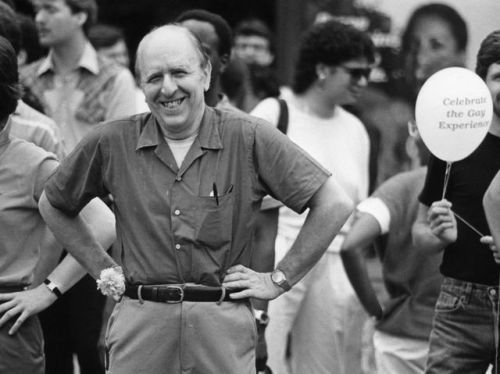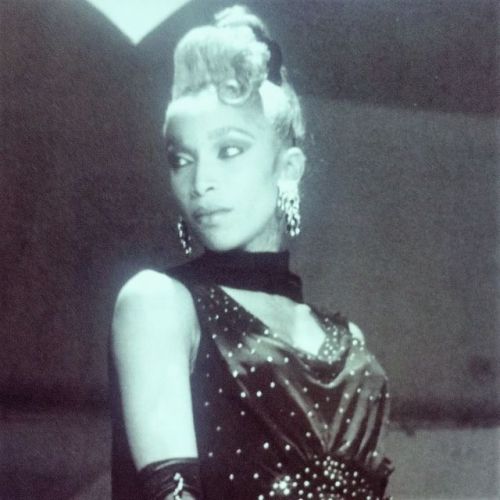#haveprideinhistory
1960’s gay rights champion Dick Leitsch died on June 22, 2018. We’ll be bringing you a full episode about Dick and his contributions to the movement during Season Four. In the meantime, we’ve produced this farewell episode to introduce you to Dick, who was a one-of-a-kind, out-and-proud, fearless leader at a time when few people dared to risk all to carry the ball forward in the fight against police repression and society’s condemnation. Listen now: http://bit.ly/mgh-leitsch
This Saturday in Brooklyn: JoinMaking Gay History, Food 4 Thot, Nancy and LGBTQ&A for the biggest, queerest live show, one night only. Get your tickets here http://bit.ly/bigqueerpodfest
“'LET HE WHO BE WITHOUT SIN CAST THE FIRST STONE’“ – “LIFE, LIBERTY AND THE PURSUIT OF HAPPINESS?” – “ANITA WHO?” – “KEEP YOUR LAWS OFF MY BODY. AND OUT OF OUR BEDS!,” Stop Anita Bryant Demonstration, Hollywood High School, Los Angeles, California, June 13, 1977. Photo by Pat Rocco, c/o @onearchives.
.
On June 13, 1977, forty years ago today, as queer communities across the United States continued to process and protest the success of Anita Bryant’s “Save Our Children” campaign against Miami’s anti-discrimination ordinance (which Miami voters overwhelmingly voted to repeal on June 7), approximately 5,500 demonstrators gathered outside of Los Angeles’ Hollywood High School for a march to De Longpre Park. The march, organizers explained, was “to protest any possible spread to California of antihomosexual legislation.”
.
Within months, Bryant’s campaign successfully challenged pro-gay ordinances in a number of American cities and eventually turned its attention to California, where the battle over the Briggs Initiative engulfed and galvanized the queer community. #lgbthistory #HavePrideInHistory #Resist (at Hollywood High School)
Post link
Q: “You’re the world’s most popular fruit. What are you?”
A: “Humble.” – Paul Lynde to Peter Marshall, “Hollywood Squares”
.
Picture: Paul Lynde (June 13, 1926 – January 11, 1982), c. 1975
.
Paul Lynde, who was born ninety-one years ago today, was an American comedian, actor, and television personality, best-known for roles in “Bye Bye Birdie,” “Bewitched,” and as the center square on “Hollywood Squares.”
.
After moving to New York City, Lynde made his Broadway debut in 1952. In 1960, he was cast as Harry MacAfee in “Bye Bye Birdie,” a role he’d also play in the film adaptation.
.
Lynde was a popular television actor throughout the 1960s, becoming a familiar face on shows like “The Patty Duke Show,” “The Munsters,” and “The Ed Sullivan Show.” In the late 1960s, “Bewitched” executives created the role of Uncle Arthur for Lynde, and he voiced characters like the rat Templeton in the animated “Charlotte’s Web.”
.
After guest starring on “Hollywood Squares” in 1966, Lynde became its permanent center square from 1968 to 1979. As @paleycenter explained, Lynde was “the go-to favorite among the celebrity guests, being fed questions that ensured a tart, often surprisingly risqué reply, some of his answers suggesting a coded, campy gay sensibility: [e.g., asked whether it was illegal in Texas to call a Marine a ‘sissy,’ Lynde responded, ‘I guess I’ll have to take the law into my own hands’]…To most of America he was just a ‘smart ass’ who talked kind of funny, but to the gay community his unapologetic, scalding manner was something to which they responded, perhaps interpreting the Lynde wit as a mechanism against an intolerant world.” This interpretation, however, is not universally accepted, as there are many in the queer community who see Lynde as “symboliz[ing] what’s perceived to be a self-loathing era for gay culture.”
.
For much of his life, Lynde struggled with alcoholism, and he had several run-ins with police; these issues grew worse as his career suffered in the late 1970s.
.
Paul Lynde, who had been sober since 1980, died of a heart attack in January 1982; he was fifty-five. #HavePrideInHistory #PaulLynde
Post link
“Any point of view which is opposed to gay rights is a wrong point of view, categorically, by fiat and word of God.” – Marc Rubin, June 4, 1971.
.
Picture: “GAY POWER TO GAY LOVERS,” Gay Activists Alliance wedding cake, New York City Board of Examiners, New York City, April 1971. Photo by Grey Villet, c/o @life.
.
On June 4, 1971, forty-six years ago today, in response to New York City Clerk Herman Katz’s threats of legal action against the performance of same-sex “holy unions” by the Church of the Beloved Disciple, twelve members of the Gay Activists Alliance (GAA) zapped (i.e., infiltrated and largely brought a halt to the business of) Katz’s office.
.
Specifically, GAA members (including Arthur Evans, Marc Rubin, and Vito Russo) toted a coffee wagon and a large wedding cake (topped with two same-sex couples, pictured) into the City Clerk’s office, announced they would be holding two weddings, and invited city clerical workers to attend. As city workers helped themselves to coffee and cake, Evans took over the office switchboard, informing incoming callers that the Clerk’s office was only issuing same-sex licenses that day.
.
While the protest had no immediate impact on city policy, it did get attention from local press, and it illustrated the increasing brazenness of gay activists in confronting city officials. #lgbthistory #HavePrideInHistory #Resist #Pride2017 (at New York, New York)
Post link
“I’m leaping with joy like a bird.” – Chi Chia-wei responds to Taiwan’s top court striking as unconstitutional the country’s ban on same-sex marriage
.
Picture: Chi Chia-Wei leads a rally for same-sex marriage, Taipei, Taiwan, November 2003. Photo by Sam Yeh, c/o @gettyimages.
.
Earlier today, Taiwan’s constitutional court ruled the country’s Civil Code, which provides that an agreement to marry can only be made between a man and a woman, violates the constitutional guarantees of freedom of marriage and people’s equality. The decision by the country’s top court gives Taiwan’s parliament two years to change the code and implement the ruling; if lawmakers fail to do so, same-sex marriage automatically will become available.
.
The decision puts Taiwan on track to become the first country in Asia to recognize marriage equality.
.
Chi Chia-wei, who has for decades been one of Taiwan’s most visible queer activists, brought the marriage case two years ago. “It’s been a long fight,” he said, “and I’m in need of a good sleep.” #lgbthistory #HavePrideInHistory #ChiChiaWei #Resist (at Taipei, Taiwan)
Post link
Stormé DeLarverie (December 24, 1920 – May 24, 2014), Chelsea Hotel, New York City, 2010. Photo © Alice O’Malley.
.
In the 1950s and 1960s, Stormé DeLarverie, who died three years ago today, made history as the emcee (and only drag king) of the Jewel Box Revue, North America’s first racially integrated drag revue. DeLarverie also took part in the historic Stonewall Riots in June 1969, though the specifics of her participation at Stonewall are the topic of some debate.
.
It is well-established, David Carter explains, that the catalyst for the riots—the point at which the crowd in Christopher Park turned its rage on the police—was the prolonged struggle between police and one particular butch lesbian. As the crowd watched, police subdued the woman and, as she was forced into a paddy wagon, she yelled, “Why don’t you guys do something!” At that point, the crowd erupted, forcing the police to retreat back into the bar, and starting “the high point of the violence on the part of the crowd.”
.
For many years, some argued that the person at the center of the mayhem was Stormé DeLarverie; the truth, however, is that DeLarverie was a well-known figure (a legend, some say) in the queer community by 1969, and there would be no question of her had it been DeLarverie.
.
Nonetheless, DeLarverie was among those credited with fighting back early and with particular intensity, thus taking the brunt of police brutality in the early hours of the Stonewall Riots.
.
In the decades that followed, DeLarverie played a large role in the queer liberation movement; as her New York Times obituary put it, “she literally walked the streets of downtown Manhattan like a gay superhero.”
.
Stormé DeLarverie died in her sleep on May 24, 2014; she was ninety-three. #lgbthistory #HavePrideInHistory (at Hotel Chelsea)
Post link
“One night I heard two, I believe, nurse’s aides—not the actual nurses—standing outside my door sort of laughing…[They said] ‘I wonder how long the faggot in 208 is going to last.’” – Ken Ramsauer to Geraldo Rivera, May 1983 (via “How to Survive a Plague,” by @bydavidfrance)
.
[Please note, the second picture in this post is of Ramsauer near the end of his battle with AIDS; he appears, as David France describes, “in grotesque medical distress.”]
.
Pictures: (1) Ken Ramsauer Memorial & Candlelight Vigil, Central Park, New York City, June 13, 1983, photo by Robert Maass; (2) Ramsauer, left, after the Rivera interview, c/o Contact Press Images, via @nymag.
.
On May 23, 1983, thirty-four years ago today, less than a year after his diagnosis, and four days after he gave a nationally televised interview to Geraldo Rivera on the growing AIDS crisis , New York City hardware store manager, freelance lighting designer, and activist Ken Ramsauer died of AIDS-related illness. He was twenty-seven.
.
Weeks later, on June 13, more than fifteen hundred people gathered in Central Park to honor Ramsauer, who the New York Times described as “a national symbol of the discrimination and pain suffered by victims of a condition that ravages the body’s immune system.”
.
Mourners at the memorial raised candles and held numbered signs to reflect the growing number of New Yorkers lost to AIDS. In a speech, Rivera said that Ramsauer “wanted society to know the discrimination and negative publicity that has allowed this disease a mortal head start.”
.
“In New York,” David France explains, “there were just 722 cases reported, half the nation’s total. It seemed they were all at [Central Park] that sweltering evening. My friend’s mouth hung open…I was speechless. We had found the plague…From there, it was an avalanche.” #lgbthistory #HavePrideInHistory #NeverForget #NeverAgain #KenRamsauer #Resist
Post link
“DEFEAT THE BRIGGS INITIATIVE,” demonstrators in San Francisco react to the rejection of Eugene, Oregon’s gay rights amendment, May 23, 1978. Photo © Daniel Nicoletta, whose amazing book “LGBT San Francisco” (@lgbtsanfrancisco) is available for pre-order now.
.
On May 23, 1978, thirty-nine years ago today, the typically liberal stronghold of Eugene, Oregon gave Anita Bryant’s Save Our Children campaign another resounding anti-queer victory, as voters there rejected a gay rights amendment to the city’s human rights ordinance.
.
The vote, which turned out to be the closest of the four votes on gay rights ordinances to date, was nonetheless decisive: 22,898 to 13,427.
.
That night, Bryant praised “the Christian public and all the citizens of Eugene who worked and voted against legalized immorality.” She encouraged her supporters to “continue to reach out in Godly love to all homosexuals who want deliverance, while opposing at the threshold every attempt of the militant homosexuals to represent their lifestyle as ‘normal’ and to impose it on us and our children.”
.
From there, all eyes turned to California, where the fight over the Briggs Initiative (which effectively would have banned self-identifying LGBTQs and their allies from working in public schools) took on even greater significance in the wake of the Eugene vote. #lgbthistory #HavePrideInHistory #DanielNicoletta #Resist
Post link
Gay Liberation Dance, Charles Street Meeting House, Boston, Massachusetts, May 23, 1970. Photo © N. DeWolf. #lgbthistory #HavePrideInHistory #Resist (at Charles Street Meeting House)
Post link
“Detectives from the vice squad
with weary sadistic eyes
spotting fairies.
Degenerates,
some folks say.
But God, Nature,
or somebody
made them that way.” – Langston Hughes (February 1, 1902 – May 22, 1967), “Cafe:3am.” Photo by Carl Van Vechten, February 1936.
.
Langston Hughes, who died fifty years ago today, was an American poet, writer, and activist, best known as a leader of the Harlem Renaissance.
.
Of his childhood in Kansas, Hughes later wrote: “I was unhappy for a long time, and very lonesome…Then it was that books began to happen to me, and I began to believe in nothing but books and the wonderful world in books—where if people suffered, they suffered in beautiful language, not in monosyllables, as we did in Kansas.”
.
Hughes’ signature poem, “The Negro Speaks of Rivers,” was published in 1921; “The Weary Blues,” his first book of poems, was published in 1926. In 1930, “Not Without Laughter,” Hughes’ first novel, won the Harmon Gold Medal for literature; he went on to publish “The Ways of White Folks,” two autobiographies, a history of the NAACP, and a number of children’s books, among many other works.
.
Hughes died from complications due to prostate cancer on May 22, 1967; he was sixty-five.
.
As with most queer figures in history, Hughes never publicly identified as homosexual and academics therefore “debate” about the nature of his sexuality. According to those who knew him, however, there is no doubt that Hughes was gay, though he was extremely guarded.
.
“It’s important to remember,” Hilton Als recently wrote, “that [Hughes] came of age in an era during which gay men—and blacks—were physically and mentally abused for being what they were.” And, in a significant number of Hughes’ works, his queerness is clear. Most famously, there is the short story “Blessed Assurance,” in which a father frets over his gay son: “Unfortunately…it seems his son was turning out to be a queer. He was a brilliant queer…But the boy was colored. Since colored parents always like to put their best foot forward, John was more disturbed about his son’s transition than if they had been white. Negroes have enough crosses to bear.” #HavePrideInHistory #LangstonHughes
Post link
“Some of them say that we’re sick, or crazy, and some of them think that we’re the most gorgeous, special things on earth.” – Venus Xtravaganza
.
Picture: Venus Xtravaganza (May 22, 1965 – December 21, 1988), center, c. 1988. Photo c/o Queensland Art Gallery. [TW]
.
Venus Xtravaganza, who was born fifty-two years ago today, was among the legendary children of the New York City drag ball scene featured in the 1990 documentary “Paris is Burning.” Venus, a trans woman who relied on survival (i.e., sex) work was murdered by a client before the documentary was completed; her death shed light on the ever-present threat of violence faced by trans women, and particularly trans women of color, in America.
.
Venus, who left home as a teenager, was accepted into the House of Xtravaganza in 1983, and she quickly made a name for herself in Harlem’s ball culture. In that scene, where, as one writer put it, “the allure of costume, high fashion, status, and wealth combined to form an enveloping world of love and acceptance,” Venus’ ambitions of finding a rich husband were within the status quo. But, as a number of queer theorists point out, Venus articulated her dreams in a way that emphasized the gross inequities faced by trans women of color: “I would like to be a spoiled rich white girl,” she said. “They get what they want, whenever they want it. They don’t have to really struggle with finances, nice things, nice clothes, and they don’t have to have that as a problem.”
.
In her 1993 book, “Bodies That Matter: On the Discursive Limits of ‘Sex,’” preeminent gender theorist Judith Butler discussed “Paris is Burning” and Venus specifically as illustrative of the performative nature of gender, race, and class; Butler’s work inspired academic criticism that led to an ongoing discussion regarding the painful intersection of norms and prejudices that trans and gender nonconforming people are forced to confront.
.
Venus Xtravaganza was killed on December 21, 1988; she was twenty-two. Her murder remains unsolved. #lgbthistory #HavePrideInHistory #VenusXtravaganza #TransLivesMatter #Resist
Post link
“The U.S. has the resources…to develop treatments which can make AIDS a chronic manageable disease. What’s lacking is the will. President Bush planted a tree for Ryan White. We want leadership and money to fight this war—not symbolism.” – ACT UP ad announcing the Storm the NIH action, Washington Post, May 8, 1990.
.
Picture: “WE’RE FIRED UP,” ACT UP members during the Storm the NIH action, Bethesda, Maryland, May 21, 1990. Photo by Bob Daugherty.
.
On May 21, 1990, twenty-seven years ago today, over a thousand members of AIDS Coalition To Unleash Power (ACT UP), representing chapters from across the country, staged a massive protest at the Bethesda campus of the National Institutes of Health (NIH). Citing budget cuts and bureaucratic inefficiencies that clearly could be linked to the deaths of tens of thousands of Americans (notably, even today, the NIH describes ACT UP as having been “protesting the ALLEGED slow pace of federal research”), ACT UP members occupied the NIH campus, staged a “die-in,” and plastered buildings with signs and banners.
.
Organizers provided participants with a list of the group’s fourteen specific demands from the federal government: increased funding in AIDS research; the development of new AIDS treatments; test treatments for all opportunistic infections and cancers; diversify research priorities; begin combination trials; end medical apartheid: open trials to all people infected with HIV; streamline access to pediatric treatments; provide quality clinical care in all studies; conduct research where the need is greatest; announce results as soon as possible; stop secret meetings; restructure task force decision-making; end conflicts of interest; and link funding to performance.
.
About a hundred demonstrators were arrested, including twenty-one who broke into the offices of Dr. Daniel Hoth, then-director of NIAID’s Division of AIDS, and a frequent target of ACT UP’s attention.
.
Despite limited media coverage at the time, many consider the action to be among ACT UP’s most successful. #lgbthistory #HavePrideInHistory #ACTUP #FightBack #Resist (at Bethesda, Maryland)
Post link
“I can honestly say that I did not expect to see such a public demonstration on behalf of homosexuals in my lifetime.” – Harry Hay, May 1966
.
Picture: “STOP WASTING TAXPAYERS’ $$$ ON WITCH HUNTS FOR HOMOSEXUALS,” Armed Forces Day protest, San Francisco, California, May 21, 1966. Photo c/o GLBT Historical Society.
.
In February 1966, representatives of homophile (i.e., gay rights) organizations from across the U.S. gathered in Kansas City for an annual planning conference out of which emerged the idea for the first nationwide gay rights demonstration. Specifically, activists from San Francisco, Los Angeles, Philadelphia, Kansas City, and Washington, D.C. formed the Committee to Fight Exclusion of Homosexuals from the Military and set Armed Forces Day (the third Saturday in May) as the target for a nationally-coordinated demonstration to “protest the moral dilemma with which homosexual men are confronted because of the draft and the risk of getting a less-than-fully-honorable discharge if discovered in the armed forces.”
.
On May 21, 1966, fifty one years ago today, activists in Kansas City held a small informational gathering; the Mattachine Society of D.C. picketed the White House and marched to the Pentagon; the Janus Society of Philadelphia handed out 10,000 leaflets at the Navy Yards; in Los Angeles, old-guard radicals like Harry Hay and Don Slater led a thirteen-car motorcade through the city, with each car carrying a four-sided, four-foot tall sign with messages like “10% OF GIs ARE GAY”; and about fifty people picketed San Francisco’s Federal Building before representatives of various civil rights organizations addressed a supportive crowd of about 500 people.
.
The success of the Armed Forces Day protest, as Josh Sides explains, “lay not in [the] measurable effect on Selective Service policy…but in significantly raising the profile of gay people in the nation…Nationally, the New York Times, Los Angeles Times, Newsweek, as well as dozens of smaller media outlets covered some phase of the protest. What readers and television viewers learned was that homosexuals existed and believed themselves worthy of first-class citizenship.” #HavePrideInHistory (at San Francisco, California)
Post link
“[She] felt compelled to help gay men because no one else at the time would.” – Priscilla Laubenstein, mother of Dr. Linda Laubenstein (May 21, 1947 – August 15, 1992) (pictured c. 1985) to John Portmann (“Women and Gay Men in the Post War Period”)
.
Dr. Linda Laubenstein, who was born seventy years ago today, was among the first doctors in the United States to recognize what became known as AIDS, co-authoring the seminal July 1981 article linking the disease to Kaposi’s Sarcoma. She was, as Larry Kramer said upon her death, “incredibly important in the history of AIDS, a genuine pioneer, and a real fighter for what she believed”; Kramer based the character of Dr. Emma Brookner in his “The Normal Heart” on Laubenstein.
.
As a child, Laubenstein had severe asthma and, at age five, contracted polio. She spent months in an iron lung and was left paraplegic; she used a wheelchair the rest of her life. Physically unable to attend elementary school, Laubenstein participated via an intercom system installed in her home; other students at her high school, the campus of which was not wheelchair accessible, carried her up and down stairs so she could attend classes. She went to Barnard College because the campus was accessible; she studied medicine at New York University.
.
In 1979, Dr. Laubenstein saw the first patient, a young gay man, whom she diagnosed with Kaposi’s Sarcoma; two weeks later, she diagnosed a second patient, also a young gay man, with the same disease. By 1982, she had seen sixty-two patients with AIDS—a fourth of the total cases recorded in the U.S. at the time. She spent the rest of her career focused on AIDS.
.
Laubenstein also was a vocal AIDS activist who criticized the American government for its neglect in fighting the epidemic. Along with Kramer, she took stances that were unpopular with many in the gay community, namely the opinions that bathhouses should close and gay men generally should decrease sexual activity.
.
Starting in the mid-1980s, Laubenstein’s mental and physical health suffered, though she continued working. She died unexpectedly of a heart attack on August 15, 1992; she was forty-five. #HavePrideInHistory #LindaLaubenstein
Post link
“If society and I differ on anything, I will give society a second chance to convince me. If it fails, then I am right and society is wrong, and if society gets in my way, it will be society which will change, not I.” – Frank Kameny
.
Picture: Frank Kameny (May 21, 1925 - October 11, 2011), Gay Pride Day, Washington, D.C., 1985. Photo c/o @washblade.
.
Dr. Frank Kameny, who was born ninety-two years ago today, is among the most important figures in queer history, serving as the American gay rights movement’s moral and intellectual compass for half a century.
.
A hyper-intelligent, Harvard-educated astronomer, Kameny never intended to be an activist. In 1957, he was arrested on a morals charge, pleading guilty based on assurances the charge would be expunged. The U.S. government nevertheless discovered it, fired Kameny from his government job, and barred him from future federal employment. Kameny took this as a declaration of war.
.
“I am not a belligerent person,” he wrote, “nor do I seek wars, but having been forced into a battle, I am determined that this thing will be fought thru to a successful conclusion.”
.
In 1961, he co-founded the Mattachine Society Washington, which shifted the homophile movement to direct action. In 1965, he helped organize the first large gay rights pickets, which led to the Annual Reminders at Independence Hall from 1965 to 1969. In 1968, noting the power of “Black Is Beautiful,” he coined the phrase “Gay Is Good.”
.
After Stonewall, Kameny focused on having homosexuality removed from the APA’s list of mental disorders, a victory secured in 1973. He then mounted the first sustained fight against the military’s anti-gay policies. And, in 1975, the Civil Service Commission announced new rules dictating that homosexuals could not be barred or fired from federal employment because of their sexuality.
.
Finally, in 2009, the federal government formally apologized to Kameny. “Apology accepted,” Kameny responded.
.
These examples represent only a fraction of Kameny’s contributions; there are countless others.
.
Frank Kameny died on October 11, 2011 (National Coming Out Day); he was eighty-six. #HavePrideInHistory #Resist #FrankKameny
Post link
“GOD IS GENDER NON-CONFORMING,” Trans Day of Action, June 2014. Photo c/o Hollow Sidewalks. #lgbthistory #HavePrideInHistory #Sunday
Post link
“STOP CRUCIFYING QUEERS – OUTRAGE!,” OutRage protest, London, United Kingdom, c. 1996. Photo by Steve Mayes, c/o OutRage.
.
On May 17, 1990, twenty-seven years ago today, the World Health Organization announced its decision to remove homosexuality from the international listing of mental health disorders. In 2004, queer rights organizations from around the world—and specifically those focused on developing countries—sought international recognition of May 17 as a day to draw awareness to the ongoing impact of anti-queer violence, discrimination, and repression.
.
On May 17, 2005, twelve years ago today, organizations around the world marked the first International Day Against Homophobia (IDAHO).
.
In 2009, in order to recognize the ongoing violence and discrimination faced by trans and gender nonconforming people worldwide, “Transphobia” was added to the name of the commemoration. And, increasingly, “Biphobia” is recognized as a threat of equal measure, as is violence against any member of the community.
.
In recognition of International Day Against Homophobia, Transphobia, and Biphobia, we offer the following reminder: to be queer is to be criminal in 72 countries; 13 countries provide the death penalty for same-sex sexual activity (though only 8 countries have implemented the penalty in recent years); in 14 countries, LGBTQIAs face life in prison if discovered; in 52 countries, the penalty can run up to 14 years in prison.
.
While 85 countries offer some protections, only 9 states offer constitutional guarantees to protect the queer community; in the vast majority of countries, our community is forced to seek protection from a patchwork system of statutes, case law, and custom. As too many know too well, these so-called protections can be fleeting.
.
In recent weeks, the threat of anti-queer discrimination has been made painfully clear through the reports of mass incarcerations, torture, and killing of queer men in Chechnya.
.
As Pride season approaches, we urge those fortunate enough to be protected by family, friends, custom, and law to remember: None of us is free until all of us are free. #lgbthistory #HavePrideInHistory #Resist #IDAHOT
Post link
“This world is for me too, honey. And they have to understand that. I have a right to be here, just like everybody else. See, their problem is: they don’t want you to know about me. Because, first of all, I get too many dicks hard. Simple as that.” – Octavia St. Laurent (March 16, 1964 – May 17, 2009) (pictured c. 1991)
.
Octavia St. Laurent (a.k.a. Heavenly Angel Octavia St. Laurent Manolo Blahnik; a.k.a. Octavia St. Laurent Mizrahi), who died eight years ago today, was one of the trans icons of New York City’s underground voguing community, brought to the attention of the mainstream by Jennie Livingston’s seminal 1990 documentary “Paris is Burning.”
.
“I want to be somebody,” Octavia told the world. “I mean, I am somebody. I just want to be a rich somebody.”
.
Octavia had the distinction of being one of the “Paris is Burning” subjects to live the longest, and her presence in the decades after the documentary was as unapologetically fabulous and queer as any of the film’s ball performances. Among other things, Octavia used her fame—and the consistently-increasing awareness of the film—to speak out about violence, drug addiction, and AIDS in and among queer communities of color.
.
In her last interview, Octavia was asked what advice she would give to the legendary children of the future. “Live life,” she said. “Live life and do not take anything for granted. Because what you have today can instantly be gone tomorrow. And don’t settle for nothing but the best.”
.
Octavia St. Laurent died of cancer on May 17, 2009; she was forty-five. #lgbthistory #HavePrideInHistory #OctaviaStLaurent #Resist
Post link
On May 17, 1989, twenty-eight years ago today, Tom Fox, the subject of Michael Schwarz’s photo series “When AIDS Comes Home,” received word that his recent radiation and chemotherapy treatments failed, leaving no other treatment options. Schwarz took this picture seconds after Fox learned the news.
.
Tom Fox died on July 11, 1989. Photo c/o @ajcnews. #lgbthistory #HavePrideInHistory #NeverForget #NeverAgain #Resist (at Atlanta, Georgia)
Post link
202-456-1111
.
Call the White House and express, in no uncertain terms, your thoughts on the current president’s vile attack on the rights of your trans siblings: Trans People Are Not A Burden.
.
Picture: “WE’RE HERE, WE’RE QUEER, WE HATE THE FUCKING PRESIDENT!,” AIDS Coalition To Unleash Power (ACT UP), New York City, 1990. Photo by Dona Ann McAdams (@leicalola), c/o Bronx Documentary Center. #lgbthistory #HavePrideInHistory #Resist
Post link
For those in the U.S.: Please call the Senate switchboard at 202-224-3121 and ask to speak to your state’s senators. Demand they save healthcare. And then call again.
.
As Ian Millhiser said: “Thousands of lives can be saved if every ‘yes’ vote has the worst night of their life tonight.”
.
Picture: “HEALTH CARE IS A RIGHT” – “LIVING WITH HIV,“ ACT UP member, Chicago, Illinois, June 1991. Photo by Genyphyr Novak, c/o Windy City Media. #lgbthistory #HavePrideInHistory #Resist #ActUp #FightBack #FightTrump (at Chicago, Illinois)
Post link

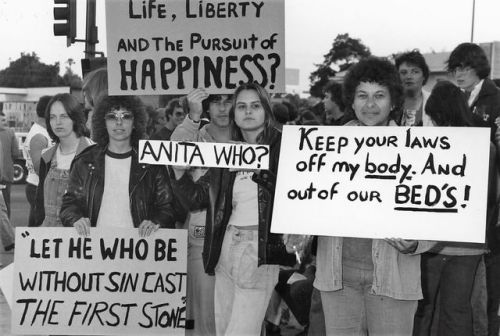




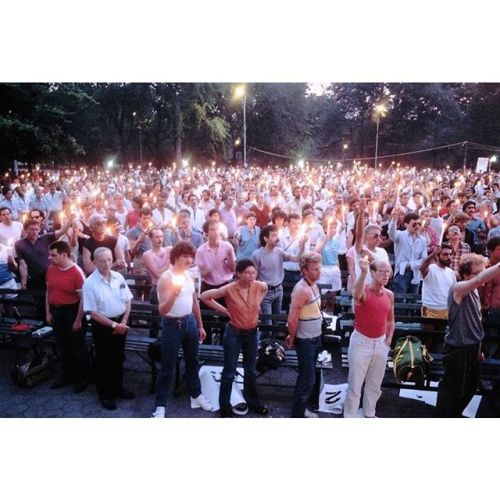



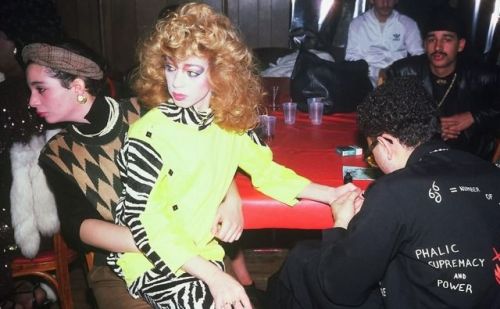
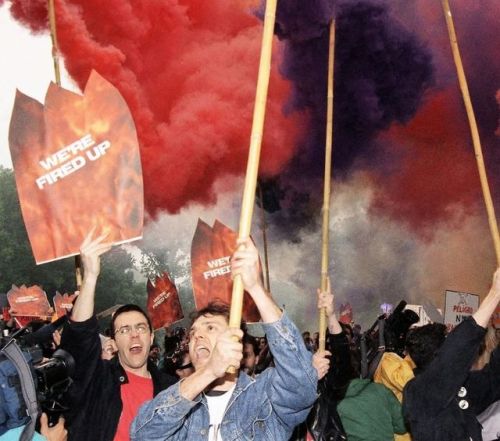
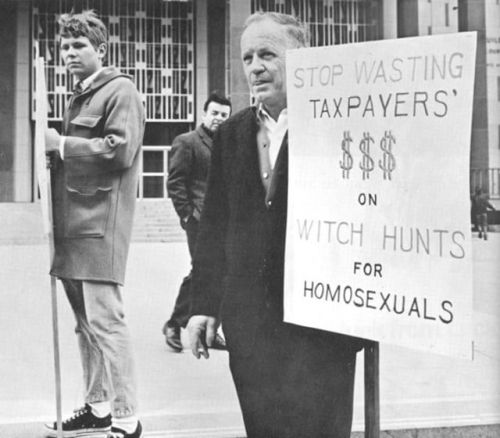
![“[She] felt compelled to help gay men because no one else at the time would.” – Priscilla Laubenstei “[She] felt compelled to help gay men because no one else at the time would.” – Priscilla Laubenstei](https://64.media.tumblr.com/c1fea6545909a53c52839dd6e69f31fa/tumblr_oqbfxsQdVq1v6m5vmo1_500.jpg)
